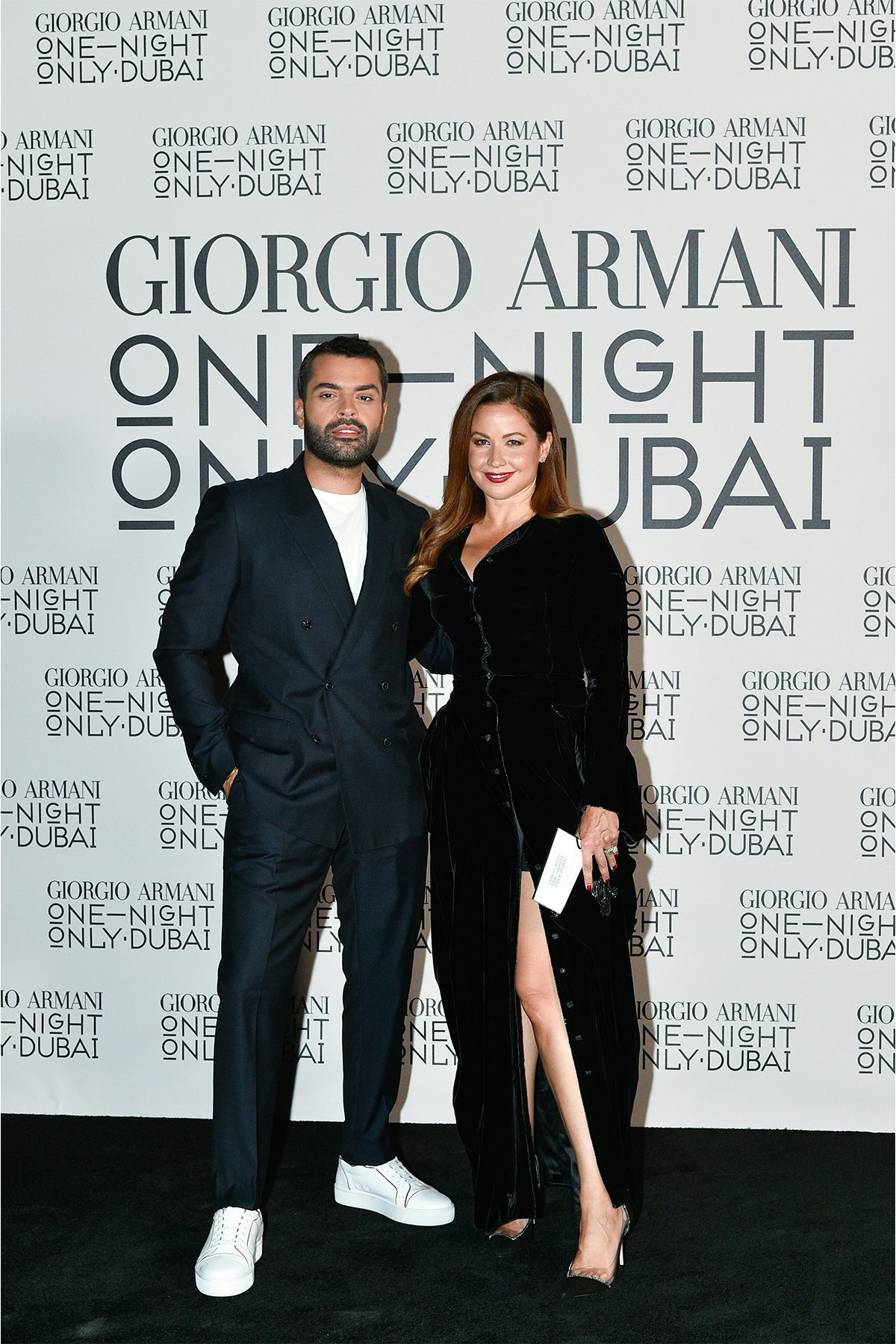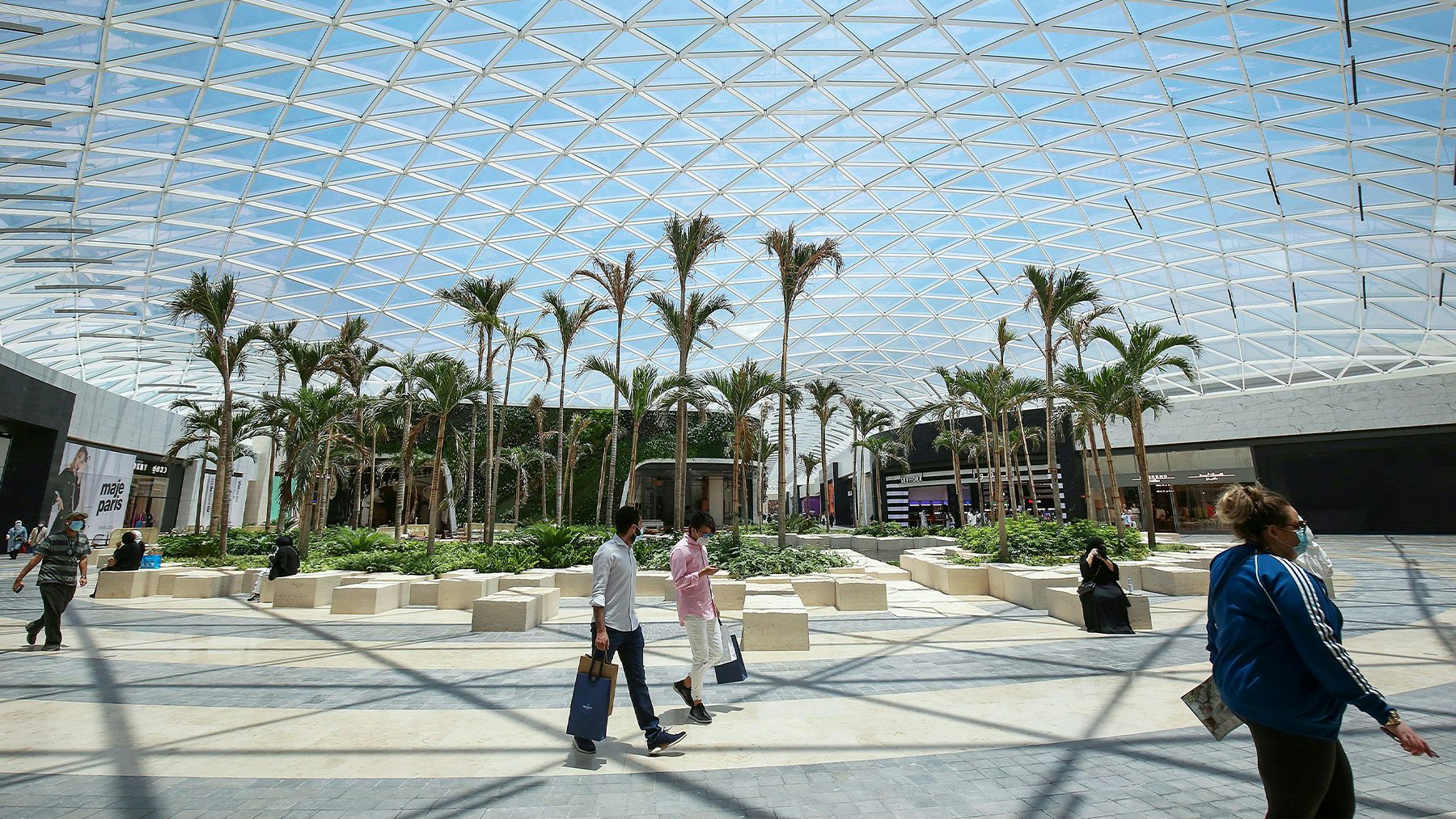Chanel, Dior Entice Gulf Clients to Shop Locally | BoF Professional, News & Analysis
Luxury brands are playing a game of one-upmanship across the Middle East this week and for good reason. The luxury sector is still trying to make up lost ground as wealthy customers from Gulf countries have been unable to travel to their favourite shopping haunts in Europe as often as they like for nearly two years.
Following last week’s Giorgio Armani show at the foot of the Burj Khalifa, the world’s tallest building, Chanel is also pulling out all the stops in Dubai to re-show its cruise collection. Elsewhere, Dior opens its first exhibition in Qatar, the latest destination in its “Christian Dior: Designer of Dreams” world tour that passed through Paris, London, Shanghai and New York, at the design and innovation hub M7 located in Msheireb Downtown Doha.
Virgil Abloh, too, is expected to be in Doha, where Qatar Museums is set to present a mid-career retrospective on the founder of Off-White and artistic director of Louis Vuitton menswear. The exhibition will be on view at Doha’s Garage Gallery at the Fire Station from Nov. 4. Both Abloh’s show and the Dior exhibition are scheduled to run through March 2022.
Valentino is also getting in on the act. As part of the weeklong QatarCreates festivities, it will host Valentino Des Ateliers Haute Couture collection in the Qatari capital until Nov. 5, with both chief executive Jacopo Venturini and creative director Pierpaolo Piccioli expected to attend.
The timing of these events by European luxury brands is also aligned with regional industry events, such as Arab Fashion Week, which returned to its full physical schedule last week in partnership with Dubai Design District (D3).
“Together with D3, we are positioning Dubai at the epicentre for the fashion industry in the Middle East,” said Jacob Abrian, founder and chief executive of the Arab Fashion Council, referring to the collective efforts made by partners of the event such as D3′s executive director Khadija Al Bastaki.
Another international attraction this week will be the third edition of the Fashion Trust Arabia awards in Doha on Nov. 3. Tania Fares is co-founder and co-chair of the trust, a non-profit initiative launched in 2018 under the patronage of Her Highness Sheikha Moza Bint Nasser Al-Missned (former Qatari first lady and mother of the current emir of Qatar) as honorary chair, and co-chaired by Sheikha Al-Mayassa bint Hamad bin Khalifa Al-Thani (the emir’s sister and also the chairperson of Qatar Museums).
Fares has not only noted the increase of luxury brands holding physical events in the GCC region (Gulf Cooperation Council countries comprising Saudi Arabia, Kuwait, Qatar, Oman, Bahrain and the United Arab Emirates) but the pandemic era rise in local luxury spending that is motivating it.
“People were used to spending when they travelled to New York, LA, Paris, London [and] Milan, and because they were here, I know from [some] luxury brands that [local] revenues have doubled or tripled. They have done very well because customers stayed in their countries,” Fares said.
Cedric Haddad and Raya Abirached attended Giorgio Armani’s “One Night Only Dubai” fashion show at the Armani Hotel Dubai on October 26, 2021 in Dubai, United Arab Emirates. Getty Images.
The repatriation of spend back to Gulf countries has made luxury executives take notice of the urgent need to allocate more of their marketing budgets to local activations. Not only do shows and exhibitions keep core customers engaged and excited, but they also provide brands with a way to enhance the clienteling experience for the highest-spending VIP clients.
“It’s not surprising to see the biggest fashion houses hosting events in Dubai, Doha and Kuwait, and soon in Riyadh as well,” said Rachad Tabiat, chief executive at Al-Othman, one of the region’s leading luxury fashion shopping destinations, with boutiques in Kuwait and Bahrain, and plans to expand further around the region. Founded by Tabiat’s father in 1956, the retailer was one of the first to bring European brands to the Middle East.
“The demand for luxury products by clients in the GCC region continues to grow and brands now consider these markets as golden opportunities,” he added.
This, of course, was true before the pandemic, but now Gulf markets are even more important for luxury brands as they recover from the impacts of Covid-19.
Repatriation Has Helped Luxury’s Recovery in the GCC
The shift of Chinese luxury consumers’ spend back to the mainland was one of the biggest business stories of the pandemic period, but it’s not the only market where brands have needed to invest more locally to reach customers unable to travel abroad due to restrictions.
Bain & Company reported a 17 percent drop in the luxury goods market of the wider GCC region in 2020 to $7.4 billion, with the tourism-dependent UAE bearing the brunt of the decline and suffering a 25 percent drop in luxury sales compared to 2019.
However, there has been a swift bounce back due to relatively early measures to re-open after restrictions were lifted in the GCC and a shift in inbound tourism flows, combined with repatriated spend on luxury by GCC nationals, who usually purchase 30 to 40 percent of their luxury goods outside the region, according to Bain & Company. By May 2021, Bain was reporting promising results in the luxury category in the Middle East, with Dubai outperforming other geographies in the region.
Qatari shoppers in the Villaggio shopping mall in Doha. Getty Images.
“While in 2021 H1 overall retail sales [in the UAE] is just catching up with what it was in H1 2019, the performance of luxury is higher. Most luxury brands are significantly above 2019 [levels], with the possible exception of watches,” Cyrille Fabre, partner at Bain & Company Middle East, told BoF in September ahead of the start of the months-long Dubai Expo.
In the short term, at least, this bodes well for the regional shopping capital. Prior to the pandemic, 60 percent of luxury spend in Dubai came from tourists, according to Bain; local retailers believe that the expo will help lure regional and global travellers back.
Both Oman and Bahrain were popular destinations for Saudi tourists prior to the pandemic, whereas Kuwait and Qatar were less exposed to tourism, but were subject to long lockdown periods, causing a temporary dent in spending growth.
Today, with tourism reopened across much of the region and no sign on the horizon of a return to lockdown, intra-regional travel is likely to be the first step on a longer road to the resumption of international travel, benefitting retailers and joint-venture partners that are able to capitalise on demand for global brands from local consumers and GCC tourists.
Strong Medium-Term Outlook for Local Luxury
The recent repatriation of luxury spend is good news for the likes of Al Mana, led by managing director, Wissam Al Mana, a Qatar-based firm that has held licenses and franchises for a range of brands including Balenciaga, Hermès, Alexander McQueen and Loro Piana; likewise, for Dubai-based luxury giant Chalhoub Group, which has distributed luxury goods from Christian Dior, Lanvin, Celine, Marc Jacobs, Ralph Lauren across multiple countries in the region.
According to Khalid Al Tayer, chief executive of luxury multi-brand online retailer Ounass and managing director of Al Tayer Insignia, Al Tayer Group’s retail business, which operates joint ventures with brands including Gucci and Saint Laurent, brands have adapted to the redirected luxury spending in ways that stand them in good stead to retain local consumers, even when they are able to travel abroad more freely.
“[The brands have] really accelerated…in their adaptation of local tastes and local cultures and local celebrations by coming up with communication, [events] and merchandising that appeals to them… They’re really considering the Middle East a lot more seriously than they have in the past,” he said.
The luxury industry has also been waiting for the full-throttled return of Saudi Arabia, by far the Gulf’s largest market geographically, by population and economically, with its ongoing opening up to international business. Bain contends that the kingdom will be the Gulf’s driver of luxury growth for the foreseeable future.
Kuwaiti shoppers at the 360 Mall in the capital Kuwait City. Getty Images.
A 2019 report from McKinsey estimated that “more than 50 percent of Saudi spending on leisure and entertainment is outside the kingdom, with categories such as luxury nearing 70 percent,” though retail leaders within Saudi Arabia are hoping the pandemic will have helped to accelerate a more permanent shift in luxury consumption.
As owners of Rubaiyat Modern Luxury, husband and wife duo Sheikh Abdullah Bingazr and Wafaa Abbar have owned the distribution rights for leading luxury brands such as Bottega Veneta, Kenzo and Dolce & Gabbana in Saudi Arabia for years. Another major player is the chief executive of Saudi Jawahir Trading, Badr Al Deghaither, who has had distribution rights for labels including Givenchy and Alexander McQueen.
Luxury giants from the UAE also have assets in or distribution agreements that span the Saudi market. In August, Chalhoub Group launched a new shopping destination at Riyadh Park in the Saudi capital, called “Concept by Muse” which targets Saudi youth, the group said in a statement.
“The retail landscape in Saudi Arabia has evolved significantly over the last few years, especially as young customers become increasingly discerning and attentive to global shopping trends while staying true to their roots and culture,” said David Vercruysse, president of managed companies at Chalhoub.
According to Al Tayer, “Saudi is going through a very exciting cultural shift and it’s a very exciting economic transformation as well, so it sets a base for a much more sustainable Saudi Arabia for the future, rather than being hugely dependent on oil. For the luxury goods industry this is only a positive opportunity,” he said, adding that Saudi will shortly overtake the UAE as the biggest market for Ounass, Al Tayer’s luxury multi-brand online retailer.
In Saudi Arabia, as in the rest of the GCC, another major factor likely to shape the future reshoring of luxury, is a higher proportion of overall spend happening online. Though e-commerce once lagged in the region, the pandemic helped accelerate adoption.
Bain reports that almost 70 percent of high-net-worth GCC customers, now say they are comfortable with online shopping. Al Tayer’s Ounass and Bloomingdale’s, Emaar’s Namshi, Majid Al Futtaim’s That Concept Store and Chalhoub’s Tryano and Level Shoes are all aiming to capture online consumers ahead of or away from international competitors.
Still, the recent growth rate of e-commerce is likely to level off somewhat as people return to physical stores, especially as retailers and brands work to give local consumers an exceptional experience closer to home.
“Of course we love shopping in other countries but the shopping here, [for example] Galeries Lafayette [in Doha] is in a beautiful area; it’s a beautiful mall, with a great edit, amazing designers, they [will continue to] do very, very well here,” Fares said.
Local retailers seem to agree. “Retail is here to stay,” Riyadh-based Alhokair Fashion Retail chief executive Marwan Moukarzel told Arab News earlier this year. “It is a cultural thing; it is an entertainment destination and family destination above all.”
Related Articles:
Middle East E-Commerce Takes Flight




